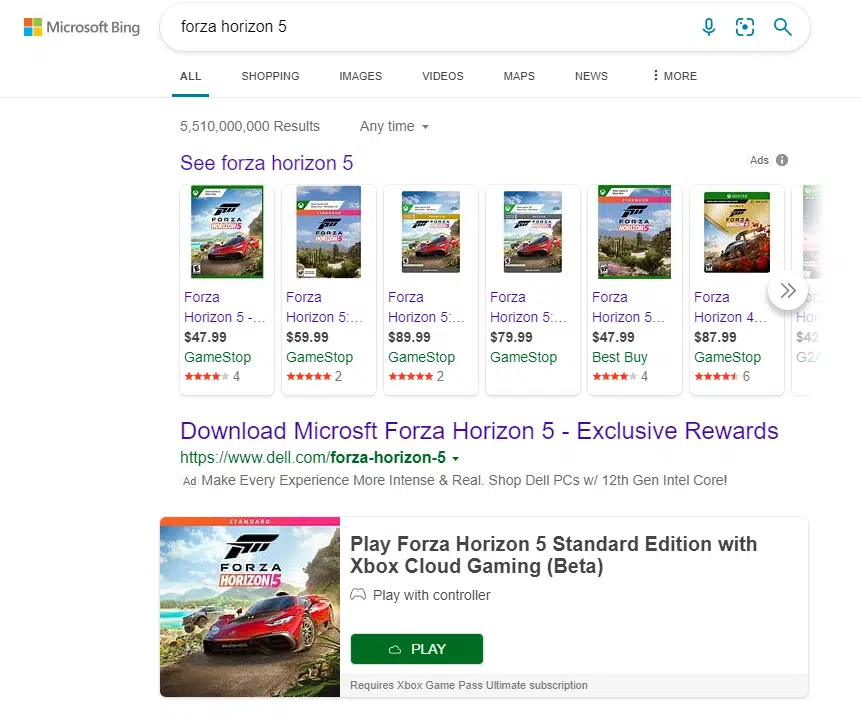Microsoft is reportedly embarking on a significant strategic exploration, testing an ad-supported free tier for its Xbox Cloud Gaming service. This move, if it comes to fruition, could fundamentally alter the accessibility landscape of cloud gaming, inviting a broader audience while simultaneously navigating the delicate balance between free access and a sustainable business model.
The Allure of “Free” Gaming, With Asterisks
According to recent reports, Microsoft`s employees are currently experimenting with this potential new tier. The concept is straightforward, yet nuanced: users could gain access to certain games via cloud streaming without a Game Pass subscription, provided they engage with advertisements. Initial insights suggest a model where players would endure approximately two minutes of pre-roll advertisements before diving into their chosen game. The proposed content includes “some” games already owned by the user, alongside titles featured in Microsoft`s “Free Play Days” promotions and potentially a selection of “Xbox Retro Classics.”
However, as with most “free” offerings, limitations are anticipated. Discussions point to potential restrictions such as one-hour session caps and a monthly aggregate playtime limit of five hours. These parameters, while still in flux, highlight a deliberate strategy to offer a taste of cloud gaming – a generous sample, perhaps, but certainly not an all-you-can-play buffet. It’s an exercise in controlled generosity, designed to pique interest without cannibalizing the core Game Pass Ultimate subscription.
A Strategic Play in an Evolving Market
This rumored initiative is hardly a bolt from the blue. Xbox leadership has previously hinted at such a direction. Xbox boss Tim Stuart alluded to ad-based tiers some time ago, while Jason Ronald, another prominent Xbox figure, discussed making the service “more affordable” and “accessible.” Offering a zero-cost entry point, even with advertising, directly aligns with these stated ambitions. It`s a calculated maneuver to expand the total addressable market for Xbox services, reaching individuals who might be hesitant to commit to a monthly subscription but are amenable to experiencing games on their PC, Xbox console, handheld device, or even through a web browser.
The timing of this development is also noteworthy. Xbox Cloud Gaming recently transitioned out of its beta phase, receiving various enhancements. Concurrently, Microsoft announced that the highest-quality streaming at 1440p would be reserved for Game Pass Ultimate subscribers, whose monthly fee also saw an increase to $30. This confluence of events paints a picture of a multi-tiered strategy: premium features for premium subscribers, and a more accessible, ad-supported tier for those at the entry level. It’s an intriguing duality, aiming to capture value at both ends of the consumer spectrum.
Learning from the Past: A Cautionary Tale?
While Microsoft`s scale and reach are undeniable, the concept of ad-supported game streaming isn`t entirely novel. A decade ago, in 2012, Square Enix ventured into this territory with “Coreonline.” The service offered free streaming of select titles, punctuated by advertisements. Despite its initial premise, Coreonline was ultimately discontinued a mere 15 months later due to a notable lack of player engagement. This historical precedent serves as a sober reminder that merely offering a service for “free” with ads does not guarantee success; the value proposition, user experience, and content library must resonate profoundly with the target audience.
The challenge for Microsoft will be to curate a library and service experience compelling enough to overcome the inherent friction of advertising, without diminishing the perceived value of its premium Game Pass offerings.
The Road Ahead: Impact and Outlook
Should this ad-supported tier become a public reality, its impact on the cloud gaming ecosystem could be substantial. For players, it represents a potentially risk-free gateway into an otherwise subscription-gated world. For Microsoft, it`s an opportunity to convert casual users into long-term subscribers, gather valuable advertising revenue, and strengthen its position in the fiercely competitive cloud gaming arena. The effectiveness of this strategy will hinge on several factors: the quality and relevance of the advertisements, the appeal of the available game selection, and the overall smoothness of the streaming experience within the imposed limitations.
As the testing phase continues, the gaming community watches with keen interest. Microsoft is not just testing a new feature; it`s testing the very appetite of gamers for a “free” experience that comes with a price — the price of their attention. Whether this strategic gamble pays off, or if it too becomes another footnote in the history of novel gaming monetisation attempts, remains to be seen. One thing is clear: the evolution of how we access and pay for games continues at a fascinating pace.

